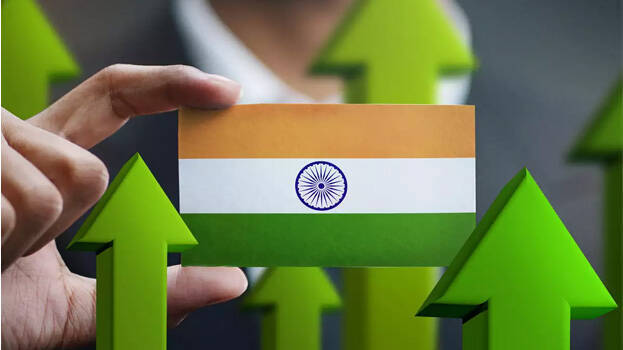

By March 2023, India has become one of the fastest-growing major economies in the world. The Indian economy has achieved a growth of 7.2% in the financial year 2022-23. India's gross domestic product was 3.3 trillion dollars. This growth rate gives hope that the central government's target of $5 lakh crore domestic product will be realized in the next few years.
The Reserve Bank of India's annual report also indicates that despite the global economic and political environment and market instability, India will continue on its path of steady growth. While India is ahead in growth, China's growth is only 4.5 percent. It is also assumed that China is likely to fall further behind due to the reduction of the working class and the increase of the dependent class in their population.
According to the GDP figures of the Office for National Statistics, good performance in agriculture, manufacturing and mining contributed to this growth. India's economy has grown because, unlike some other countries, in no time, it has overcome challenges including the Covid pandemic compared to other countries. Post-Covid, by raising capital investment and increasing private consumption to energize production processes, the economy was steadily strengthened. Through the P.M. Gathi Shakthi, the capital investment was increased for the road, airport, railway, port, transport, water transport and freight infrastructure sectors, the process gained more dynamics and momentum. The Economic Survey indicates that the country's high economic growth and the new measures to improve the business environment will create conditions for the revival and increase in foreign investment. India recorded an all-time high FDI (US$ 8484 crore) in the financial year 2021-22. Foreign investors are showing their increased interest in the country as they see the raising investment limits and opening up of various sectors. Another advantage worth mentioning is the contribution of the country's agriculture sector. The agriculture sector has achieved an average annual growth of 4.6 percent in the last six years. A three percent growth was achieved in the period 2021-22 only. Similarly, record growth has been achieved in the export of agricultural products. (Rs. 4.1 lakh crore). Statistics of growth were also recorded in foodgrain production. 31.57 crore tonnes of food grains was produced.
The central government had planned to raise Rs 65,000 crore by selling shares, but in the current financial year as of now Rs 31,000 crore has been achieved through the sale of shares.
The economy is accelerating as the labor market has returned to pre-Covid levels and unemployment in both urban and rural areas has declined. India ranks third in the global pharmaceutical industry. Even the domestic pharmaceutical market of India will reach 13,000 crore US dollars by 2030, according to an economic survey. India now exports medicines to more than 150 countries. It is estimated that by 2024 it will reach 65 billion dollars. Today, India is the leading producer of generic drugs in the world.
One of the weaknesses observed in the Indian economy is the current account deficit due to the increase in the value of imports compared to the value of exports. A continuation of the current account deficit will add pressure on the rupee and lead to depreciation. Production in sectors such as crude oil, natural gas and electricity, at least in the infrastructure sector, is not as promising as in other sectors.
The main problem is the supply chain disruptions caused by the Russia-Ukraine conflict, which has a negative impact on the fuel sector. However, India continues to be the fastest-growing country in the world. India is also ahead of developed countries in digital payments.
To continue this momentum in India, every political movement, society and individual, regardless of the party, should take action based on the national interest. We have to be very alert to prevent conflicts created in the border states with the connivance of foreign powers and religious terrorists to undermine the country's economic stability.
* (Writer is former President of FOKANA and Chairman of MBN Foundation (USA)
